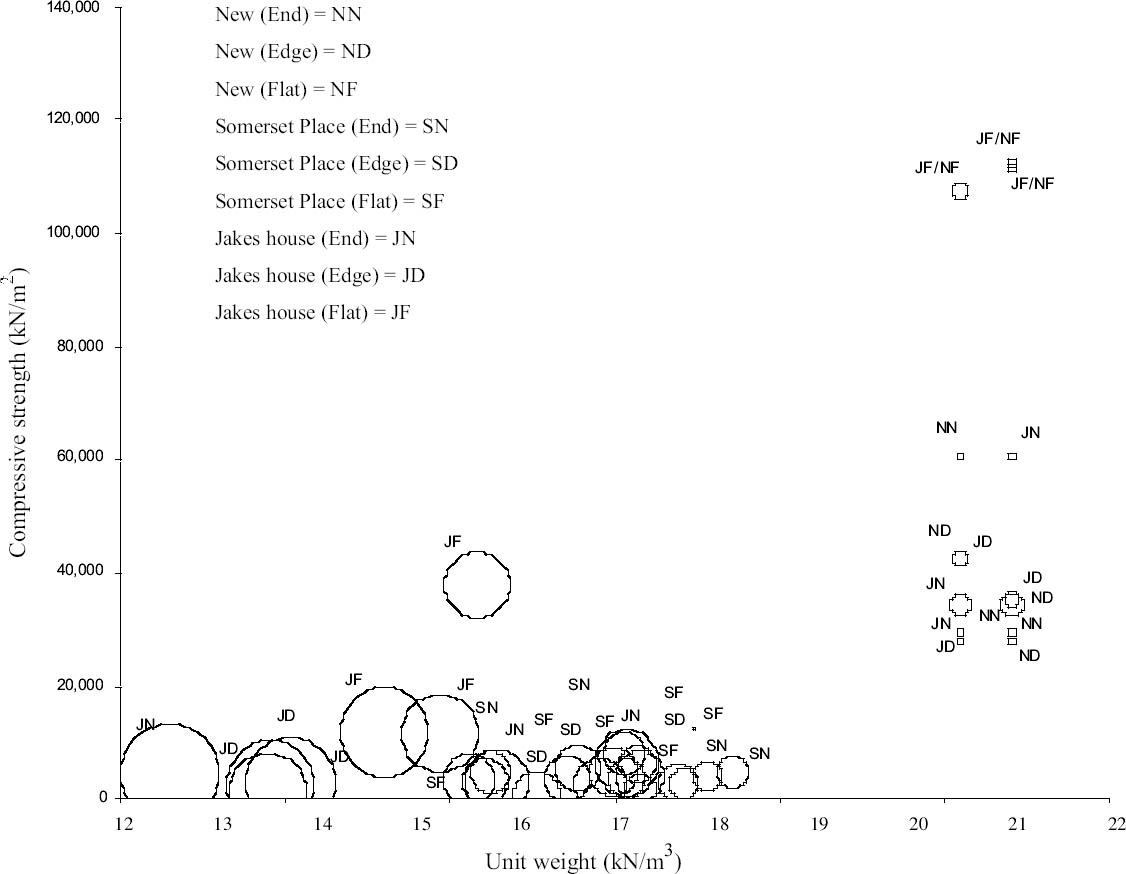ENGINEERING PROPERTIES OF HISTORIC BRICK: VARIABILITY CONSIDERATIONS AS A FUNCTION OF STATIONARY VERSUS NONSTATIONARY KILN TYPES
DEBRA F. LAEFER, JUSTIN BOGGS, & NICOLE COOPER
4 CONCLUSIONS
Variation in the appearance and engineering properties of historic brick is a direct reflection of quantity and distribution of heat within a kiln. The high level of variability in historical materials may be unanticipated by modern professionals schooled in the production techniques of 20th-century tunnel kilns, but knowledge of probable variability is critical for all individuals working in and around historic masonry structures, because establishing structural performance levels through extensive testing would be both potentially destructive and inconclusive. Although 19th-century brick could and did regularly achieve modern brick strengths, as well as minimum strength standards, a much wider performance range should be expected for historic units. Such understanding is critical when selecting input values for material properties for computer modeling. A sampling of two types of pre–Civil War brick from stationary kilns compared to modern brick from a nonstationary kiln demonstrated that the historic materials had lower average strengths, lighter unit weights, and higher absorption levels, as well as higher variability levels of those properties, particularly related to strength and unit weight, where the difference ranged from twice the level to an entire order of magnitude greater in the variability of historic materials than for the modern brick that was produced in the more consistent and controllable nonstationary kilns. As such, the results of selective, limited brick testing from historic structures should be used with great care when choosing engineering properties for analytical input, computer modeling, or material replacement specification for structures that were constructed from brick from stationary kilns.
Table .
Comparative Test Results of Modern and Pre–Civil War Brick
 |
Fig. 14.
Compressive strength versus unit weight of modern brick compared to pre–Civil War brick
 |
|

